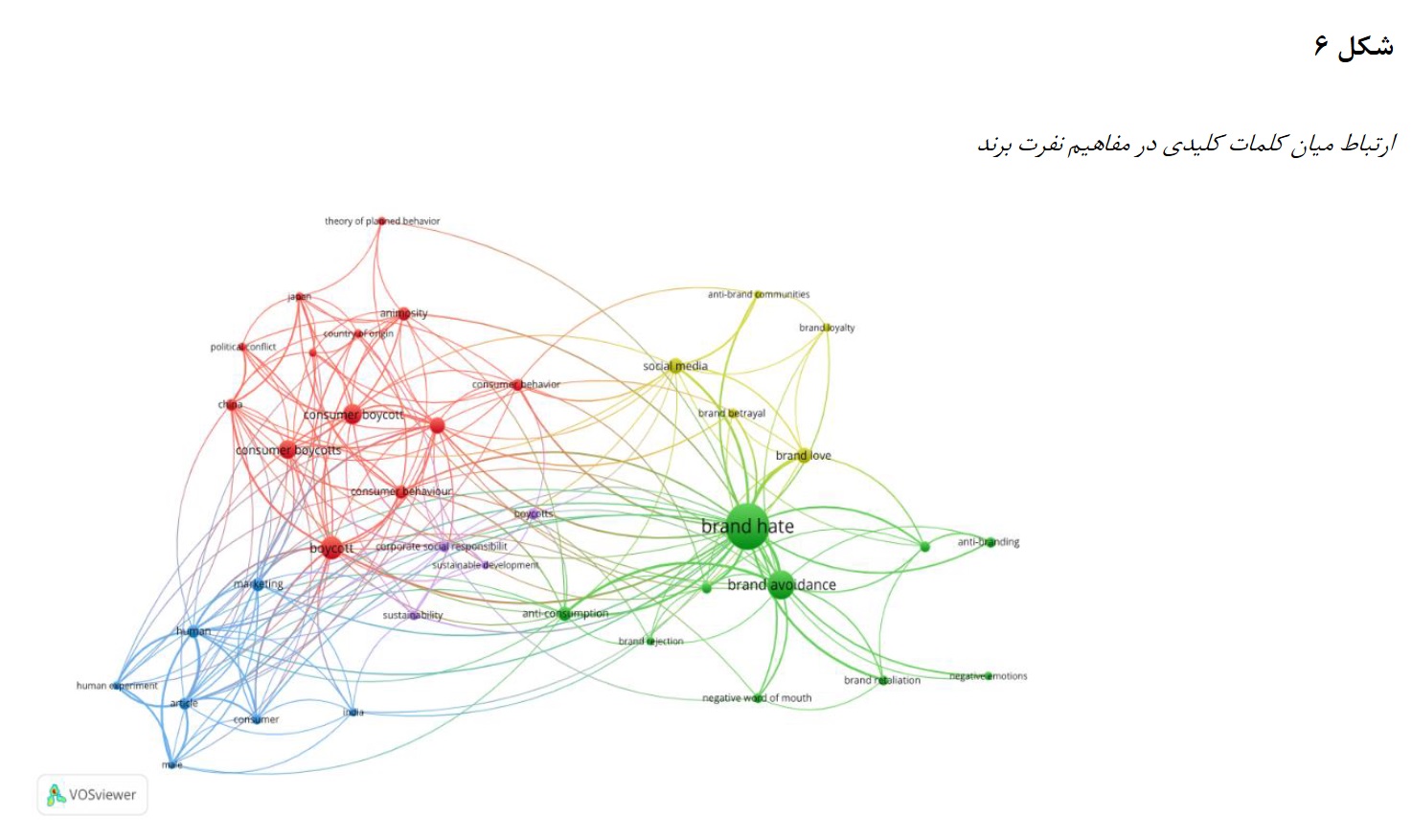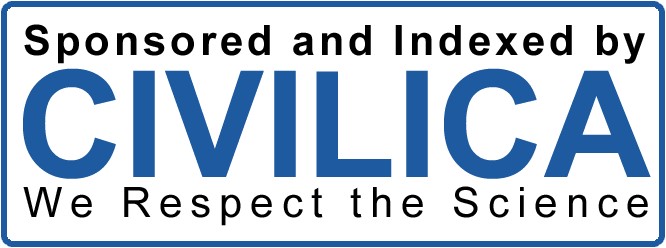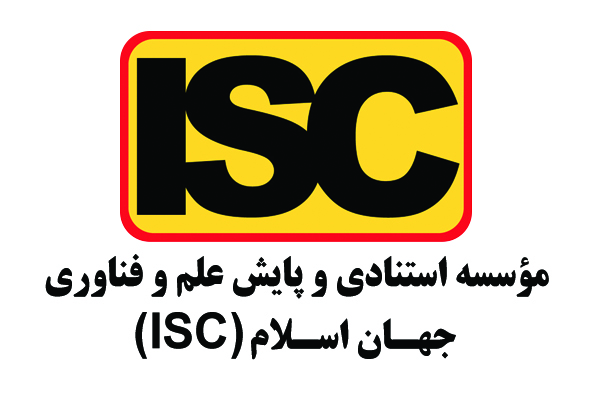Presenting a Structural Model for Brand Hate Reduction in the Iranian Home Appliance Industry with a Combined Meta-Synthesis and Interpretive Structural Modeling Approach
Keywords:
Branding, Brand Hate, Home Appliance Industry, Meta-Synthesis, Interpretive Structural ModelingAbstract
In the past, brand management researchers have paid more attention to positive aspects and attitudes towards the brand. However, today, customers' negative impacts and negative perceptions of the brand have received more attention, as this issue can increase organizational profitability and customer satisfaction. The aim of this research is to present a conceptual model for reducing brand hate among customers. In this research, initially, according to the meta-synthesis approach, by searching the Scopus database and using keywords related to brand hate, 488 articles were found. By removing irrelevant and undesirable articles based on the performed cycle, eventually 91 relevant articles remained. In this review, 10 factors affecting brand hate reduction were identified, and with the opinions of 13 experts and using the Interpretive Structural Modeling technique, a conceptual model was designed to reduce brand hate in the Iranian home appliance industry. The research results show that the factors of communication quality, complaint responsiveness, and after-sales services are recognized as the underlying factors of the model. Improving these factors can strengthen the structure of brand hate reduction. These findings are consistent with previous research and show that paying attention to environmental issues and improving them has a positive impact on brand social responsibility, product freshness, and timely delivery. These factors can improve the customer experience and better understand the price-quality fit, which will ultimately lead to positive word-of-mouth advertising and a reduction in brand hate. This research suggests that home appliance industry managers focus on basic factors and pay attention to environmental issues to be more successful in reducing brand hate. The findings of this research provide important clues for researchers interested in this field to present more dynamic conceptual models by better understanding these factors.
Downloads
References
Abbas, A., Shar, A. H., & Junejo, M. A. (2023). Why Brands Fail? Antecedents and Consequences of Brand Hate. A
Study of Fashion Industry in Pakistan. Journal of Managerial Sciences, 17(1), 01-26.
https://journals.qurtuba.edu.pk/ojs/index.php/jms/article/view/696
Abdolazimi, O., Esfandarani, M. S., Salehi, M., & Shishebori, D. (2020). Robust design of a multi-objective closed-loop
supply chain by integrating on-time delivery, cost, and environmental aspects, case study of a Tire Factory. Journal
of Cleaner Production, 264, 121566. https://doi.org/https://doi.org/10.1016/j.jclepro.2020.121566
Abid, R., & Khattak, A. (2017). Brand avoidance motivators stimulate to brand equity in the mediating role of brand
hate: A case of smartphone industry of Pakistan. Journal of Accounting and Marketing, 6(3), 250.
https://doi.org/https://doi.org/10.4172/2168-9601.1000250
Ali, S., Attiq, S., & Talib, N. (2020). Antecedents of brand hate: mediating role of customer dissatisfaction and
moderating role of narcissism. Pakistan Journal of Commerce and Social Sciences (PJCSS), 14(3), 603-628.
https://www.econstor.eu/handle/10419/224953
Attiq, S., Hamid, A. B. A., Shah, H. J., Khokhar, M. N., & Shahzad, A. (2022). Impact of brand hate on consumer wellbeing for technology products through the lens of stimulus organism response approach. Frontiers in psychology,
https://doi.org/https://doi.org/10.3389/fpsyg.2022.946362
Aziz, R., & Rahman, Z. (2022). Brand hate: a literature review and future research agenda. European Journal of
Marketing. https://doi.org/https://doi.org/10.1108/EJM-03-2021-0189
Bayarassou, O., Becheur, I., & Valette-Florence, P. (2020). "Fight or flight": coping responses to brand hate. Journal of
Product & Brand Management, 30(3), 492-511. https://doi.org/https://doi.org/10.1108/JPBM-08-2019-2519
Carvalho, D. S., & Fidélis, T. (2009). The perception of environmental quality in Aveiro, Portugal: a study of complaints
on environmental issues submitted to the City Council. Local Environment, 14(10), 939-961.
https://doi.org/https://doi.org/10.1080/13549830903244425
Chiosa, A. R., & Anastasiei, B. (2017). Negative word-of-mouth: Exploring the impact of adverse messages on
consumers' reactions on Facebook. Review of Economic and Business studies, 10(2), 157-173.
https://doi.org/https://doi.org/10.1515/rebs-2017-0059
Costa, J., & Azevedo, A. (2022). Beyond Brand Hate: Are You Willing to Forgive a Negative Experience with Your
Smartphone Mobile Communications' Brand? Corporate Reputation Review, 1-14.
https://doi.org/https://doi.org/10.1057/s41299-022-00139-7
Curina, I., Francioni, B., Cioppi, M., & Savelli, E. (2021). Traits and peculiarities of different brand hate behaviours.
Journal of Strategic Marketing, 29(3), 227-246. https://doi.org/https://doi.org/10.1080/0965254X.2019.1676293
Curina, I., Francioni, B., Hegner, S. M., & Cioppi, M. (2020). Brand hate and non-repurchase intention: A service context
perspective in a cross-channel setting. Journal of Retailing and Consumer Services, 54, 102031.
https://doi.org/https://doi.org/10.1016/j.jretconser.2019.102031
Durugbo, C. M. (2020). After-sales services and aftermarket support: a systematic review, theory and future research
directions. International Journal of Production Research, 58(6), 1857-1892.
https://doi.org/https://doi.org/10.1080/00207543.2019.1693655
Fetscherin, M. (2019). The five types of brand hate: How they affect consumer behavior. Journal of Business Research,
, 116-127. https://doi.org/https://doi.org/10.1016/j.jbusres.2019.04.017
Fusi, A., Castellani, V., Bacenetti, J., Cocetta, G., Fiala, M., & Guidetti, R. (2016). The environmental impact of the
production of fresh cut salad: a case study in Italy. The International Journal of Life Cycle Assessment, 21, 162-175.
https://doi.org/https://doi.org/10.1007/s11367-015-1019-z
Fynes, B., De Burca, S., & Mangan, J. (2008). The effect of relationship characteristics on relationship quality and
performance. International Journal of Production Economics, 111(1), 56-72.
https://doi.org/https://doi.org/10.1016/j.ijpe.2006.11.019
Gois, A. M., Moura, L. R. C., Gonçalves Filho, C., & Chinelato, F. B. (2023). Hate towards brands of educational
institutions: she hates for ideology, and he hates for previous experiences. Journal of Applied Research in Higher
Education, 15(2), 303-323. https://doi.org/https://doi.org/10.1108/JARHE-04-2021-0158
Handoko, L. P. (2016). The effect of product quality and delivery service on online-customer satisfaction in zalora
indonesia. Jurnal EMBA: Jurnal Riset Ekonomi, Manajemen, Bisnis dan Akuntansi, 4(1).
https://ejournal.unsrat.ac.id/index.php/emba/article/view/11876
Husnain, M., Syed, F., Hussain, K., Zhang, Q., Usman, M., & Javed, M. (2022). Explaining the mechanism of brand
hate: a mixed-method investigation using moderated mediation in emerging markets. Kybernetes.
https://doi.org/https://doi.org/10.1108/K-12-2021-1246
Islam, T., Islam, R., Pitafi, A. H., Xiaobei, L., Rehmani, M., Irfan, M., & Mubarak, M. S. (2021). The impact of corporate
social responsibility on customer loyalty: The mediating role of corporate reputation, customer satisfaction, and trust.
Sustainable Production and Consumption, 25, 123-135. https://doi.org/https://doi.org/10.1016/j.spc.2020.07.019
Itani, O. S. (2020). "Us" to co-create value and hate "them": examining the interplay of consumer-brand identification,
peer identification, value co-creation among consumers, competitor brand hate and individualism. European Journal
of Marketing, 55(4), 1023-1066. https://doi.org/https://doi.org/10.1108/EJM-06-2019-0469
Kerin, R. A., Jain, A., & Howard, D. J. (1992). Store shopping experience and consumer price-quality-value perceptions.
Journal of Retailing, 68(4), 376.
Kesse, A. A., Achinfo-Mensa, K., & Amartey, R. (2021). The Antecedents and Consequences of Brand Hate: A Review
of Current Literature. In Marketing Communications in Emerging Economies, Volume I (pp. 137-160).
https://doi.org/https://doi.org/10.1007/978-3-030-81329-1_6
Khan, M. A., & Lee, M. S. (2014). Prepurchase determinants of brand avoidance: The moderating role of country-oforigin familiarity. Journal of Global Marketing, 27(5), 329-343.
https://doi.org/https://doi.org/10.1080/08911762.2014.932879
Kraus, S., Rehman, S. U., & García, F. J. S. (2020). Corporate social responsibility and environmental performance: The
mediating role of environmental strategy and green innovation. Technological Forecasting and Social Change, 160,
https://doi.org/https://doi.org/10.1016/j.techfore.2020.120262
Kucuk, S. U. (2018). Macro-level antecedents of consumer brand hate. Journal of Consumer Marketing, 35(5), 555-564.
https://doi.org/https://doi.org/10.1108/JCM-10-2017-2389
Kucuk, S. U. (2019). What is brand hate? In. Springer. https://doi.org/https://doi.org/10.1007/978-3-030-00380-7
Mahaputra, M. R., & Saputra, F. (2021). Relationship Word of Mouth, Advertising and Product Quality to Brand
Awareness. Dinasti International Journal of Digital Business Management, 2(6), 1099-1108.
https://dinastipub.org/DIJDBM/article/view/1331
Malekinejad, P., Ziaeian, M., & Ajdari, A. (2020). Designing a comprehensive model of hospital resilience in the face of
COVID-19 disease. Journal of Health Administration, 23(2), 76. https://doi.org/https://doi.org/10.29252/jha.23.2.76
Nguyen, H. N. (2021). Antecedents and consequences of brand hate among netizens: empirical evidence from Vietnam.
The Journal of Asian Finance, Economics and Business, 8(7), 579-589. https://www.researchgate.net/profile/HaiNinhNguyen/publication/361623813_Antecedents_and_Consequences_of_Brand_Hate_Among_Netizens_Empirical_E
vidence_from_Vietnam/links/62bcee22056dae24e8ee5224/Antecedents-and-Consequences-of-Brand-HateAmong-Netizens-Empirical-Evidence-from-Vietnam.pdf
Panigrahi, S., Azizan, N. A. B., & Shamsi, I. R. A. (2021). Product innovation, customer satisfaction, and brand loyalty
of using smartphones among university students: PLS-SEM approach. Indian Journal of Marketing, 51(1), 8-25.
https://doi.org/https://doi.org/10.17010/ijom/2021/v51/i1/156931
Pantano, E. (2021). When a luxury brand bursts: Modelling the social media viral effects of negative stereotypes adoption
leading to brand hate. Journal of Business Research, 123, 117-125.
https://doi.org/https://doi.org/10.1016/j.jbusres.2020.09.049
Pinto, O., & Brandão, A. (2021). Antecedents and consequences of brand hate: empirical evidence from the
telecommunication industry. European Journal of Management and Business Economics, 30(1), 18-35.
https://doi.org/https://doi.org/10.1108/EJMBE-04-2020-0084
Rabben, J., Vivat, B., Fossum, M., & Rohde, G. E. (2024). Shared decision-making in palliative cancer care: A systematic
review and metasynthesis. Palliative Medicine, 38(4), 406-422.
https://doi.org/https://doi.org/10.1177/02692163241238384
Rasouli, N., Rasoolimanesh, S. M., Rahmani, A. K., Momayez, A., & Torabi, M. A. (2022). Effects of customer
forgiveness on brand betrayal and brand hate in restaurant service failures: does apology letter matter? Journal of
Hospitality Marketing & Management, 1-26. https://doi.org/https://doi.org/10.1080/19368623.2022.2043800
Roozbahani, E., Salehzadeh, R., & Mirmehdi, S. M. (2022). Evaluating the effects of corporate social irresponsibility on
brand hate and its behavioural outcomes. International Journal of Business Governance and Ethics, 16(2), 158-175.
https://doi.org/https://doi.org/10.1504/IJBGE.2022.121919
Roy, S. K., Sharma, A., Bose, S., & Singh, G. (2022). Consumer-brand relationship: A brand hate perspective. Journal
of Business Research, 144, 1293-1304. https://doi.org/https://doi.org/10.1016/j.jbusres.2022.02.065
Santos, C., Coelho, A., & Marques, A. (2023). The greenwashing effects on corporate reputation and brand hate, through
environmental performance and green perceived risk. Asia-Pacific Journal of Business Administration.
https://doi.org/https://doi.org/10.1108/APJBA-05-2022-0216
Zhang, C., & Laroche, M. (2020). Brand hate: a multidimensional construct. Journal of Product & Brand Management,
(3), 392-413. https://doi.org/https://doi.org/10.1108/JPBM-11-2018-2103

Downloads
Published
Submitted
Revised
Accepted
Issue
Section
License
Copyright (c) -1 Journal of Technology in Entrepreneurship and Strategic Management (JTESM)

This work is licensed under a Creative Commons Attribution-NonCommercial 4.0 International License.










